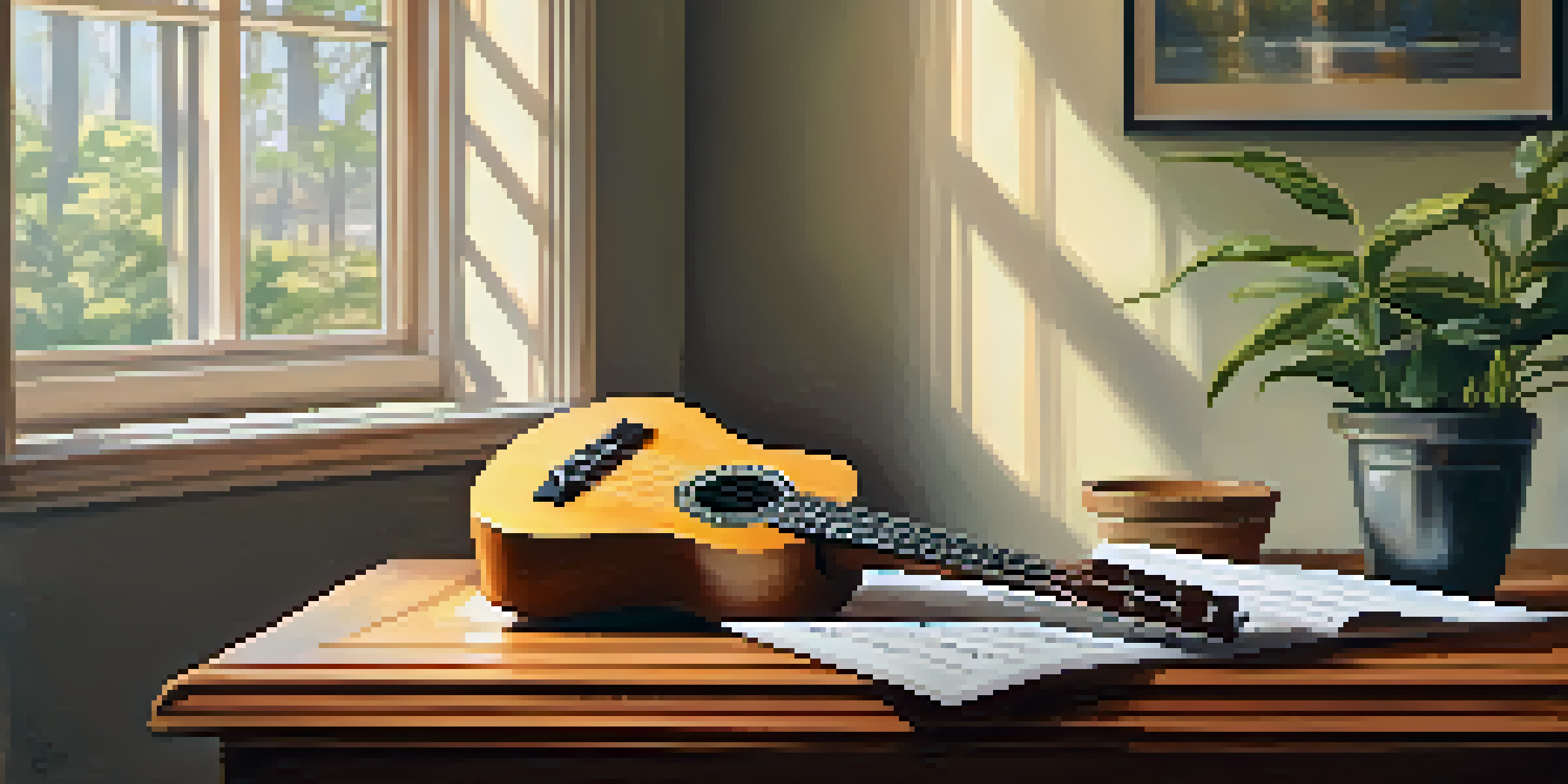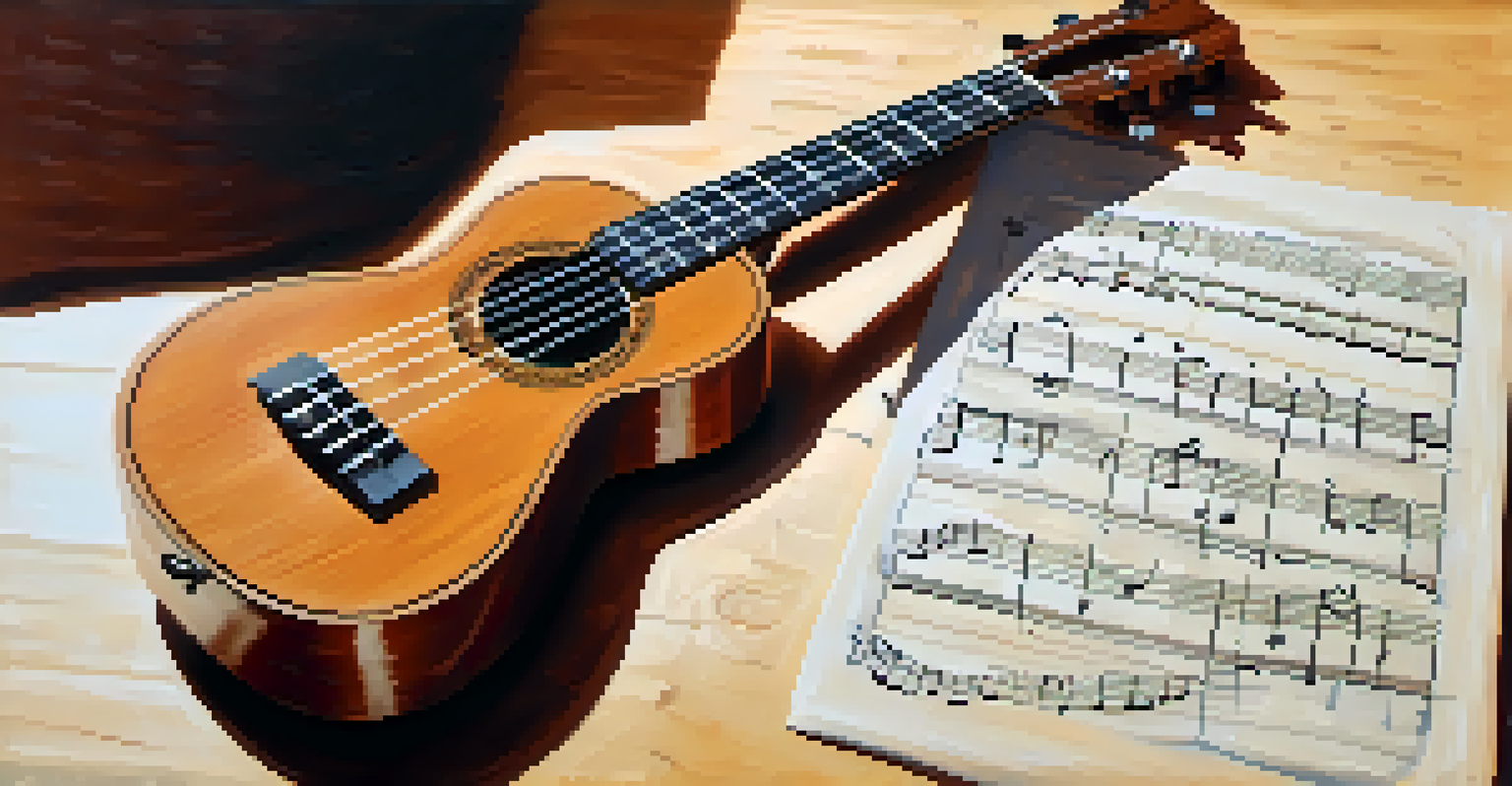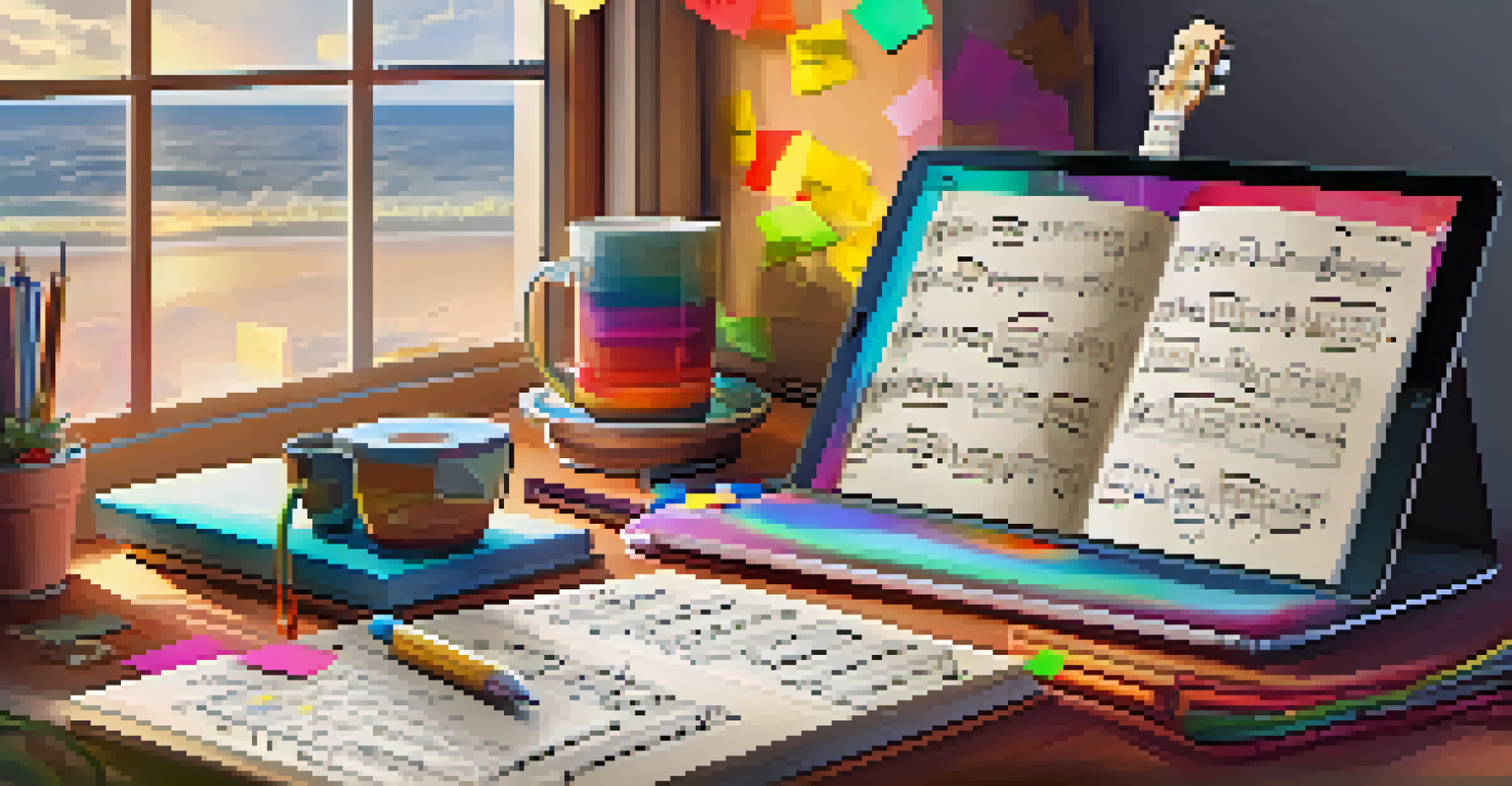Essential Techniques for Transcribing Songs for Ukulele Players

Understanding the Basics of Transcription for Ukulele
Transcribing music involves listening to a song and writing it down, which can be an enriching experience for ukulele players. It helps you develop your ear for music and understand song structures better. By breaking down songs, you’ll discover how melodies and chords work together, enhancing your overall musicianship.
Music is the shorthand of emotion.
Start by selecting a song that you love and feel comfortable with. Familiarity with the tune will make it easier to identify notes and chords. It’s like having a favorite recipe; you know the taste you’re aiming for, which gives you a solid foundation to work from.
Remember, transcribing is a skill that gets easier with practice. Don’t be discouraged if it feels challenging at first. Just like learning to ride a bike, it takes a bit of wobbling before you gain balance and confidence.
Listening Skills: The Key to Effective Transcription
Listening is at the heart of transcribing songs for the ukulele. Start by honing your ability to distinguish different instruments and parts of the music. This can be compared to tuning into a conversation in a crowded room; focusing on one voice amidst the noise takes practice.

Try to listen to the song multiple times. On the first listen, focus on the overall feel and melody. Gradually, on subsequent listens, hone in on specific sections such as the verses, chorus, and bridge. This layered approach will help you pick out the details you need to transcribe.
Transcription Enhances Musicianship
Transcribing music helps ukulele players develop their ear for melodies and understand song structures better.
Additionally, using tools like slowing down the playback speed of a song can be incredibly beneficial. Many music apps offer this feature, allowing you to catch those tricky notes and rhythms that might slip by at normal speed.
Choosing the Right Tools for Transcription
Having the right tools can make a world of difference when transcribing songs. A simple ukulele, a tuner, and a notepad or digital app for jotting down your findings are essential. Think of these tools as your trusty toolkit, ready to help you build musical ideas.
The beautiful thing about learning is that no one can take it away from you.
Apps like Ultimate Guitar or Chordify provide chord charts and can help guide your transcription process. However, be cautious—use these as references rather than crutches. Your goal is to develop your ear and understanding of music, and relying too heavily on pre-made charts might hinder that growth.
For those who love to write, consider using music notation software. Programs like MuseScore or Noteflight allow you to notate your transcriptions, making it easier to visualize the music and share it with others.
Breaking Down Songs: Sections and Structure
Every song has a structure, usually made up of verses, choruses, and bridges. Understanding these sections can simplify the transcription process. It’s like building a house; you need a solid framework before you can add the details.
Begin by identifying the song’s sections. Write down what you hear in each part, noting any chord changes and melody lines. This method will help you see the bigger picture and make it easier to piece everything together later.
Effective Listening is Crucial
Honing your listening skills allows you to distinguish different parts of a song, making transcription easier.
As you become more familiar with common song structures, you’ll find that transcribing becomes a lot quicker and more intuitive. You’ll start to recognize patterns, making it easier to predict what comes next in similar songs.
Transcribing Melodies: Finding the Right Notes
Transcribing melodies for the ukulele requires patience and a keen ear. Start with simple melodies before moving to more complex ones. It’s like learning to walk before you can run; mastering the basics will build your confidence.
Use your ukulele to play along with the song. This will help you find the right notes and understand how they fit within the chords. If you hit a wrong note, don’t worry; it’s all part of the learning process, and every mistake brings you a step closer to mastery.
Consider breaking the melody into smaller sections, playing each part slowly. Once you feel comfortable, gradually increase the tempo. This approach allows you to focus on accuracy without feeling overwhelmed.
Chords: Simplifying Harmonies for Ukulele
Chords are the backbone of most songs, and simplifying them can make your transcription process smoother. Start by identifying the root chords of the song. Think of these as the main ingredients in a recipe; without them, the dish won’t taste right.
Listen for chord changes and try to play along on your ukulele. If you’re unsure about a chord, look for similar-sounding alternatives. Often, a simple major or minor chord will work in place of more complex variations.
Utilize Tools for Better Results
Having the right tools, like music apps and notation software, can significantly aid the transcription process.
As you gain confidence, experiment with different voicings and inversions of the chords. This will not only enhance your transcription but also add your unique flair to the music.
Finalizing Your Transcription: Review and Practice
Once you’ve transcribed the song, it’s time to review and practice what you’ve created. Play through your transcription several times, making notes on areas that feel challenging. It’s like polishing a gemstone; the more you work on it, the more it shines.
Don’t hesitate to make adjustments as you play. Sometimes, what looks good on paper may feel different when played on your ukulele. Trust your instincts and be open to modifying the transcription to better suit your style.

Finally, share your work with friends or fellow ukulele players. Getting feedback can provide new insights and encourage you to keep improving your transcription skills.